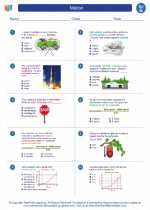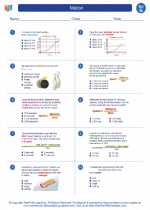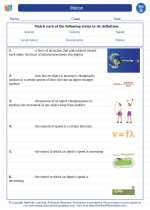Light
Light is a form of electromagnetic radiation that is visible to the human eye. It is a type of energy that travels in waves and is essential for vision. Understanding the properties and behavior of light is important in various scientific fields, including physics, optics, and astronomy.
Properties of Light
1. Wave-Particle Duality: Light exhibits properties of both waves and particles. This duality is described by the theory of quantum mechanics.
2. Speed: In a vacuum, light travels at a constant speed of approximately 299,792 kilometers per second (or about 186,282 miles per second).
3. Reflection: Light can bounce off the surface of an object. The angle of incidence is equal to the angle of reflection, according to the law of reflection.
4. Refraction: When light passes from one medium to another (e.g., air to water), its speed changes, causing it to bend. This phenomenon is known as refraction.
5. Color: Light is made up of different colors that can be separated using a prism. The visible spectrum includes red, orange, yellow, green, blue, indigo, and violet (ROYGBIV).
Study Guide
Here are some key concepts to focus on when studying light:
- Describe the wave-particle duality of light and explain how it is manifested in various phenomena.
- Calculate the speed of light in different units and understand its significance in the study of physics.
- Explain the laws of reflection and demonstrate their application in practical situations.
- Explore the concept of refraction and its implications in optical devices like lenses and prisms.
- Understand the electromagnetic spectrum and how light fits within it, including the differences between visible and non-visible light.
By mastering these concepts, you will develop a solid understanding of the fundamental properties and behaviors of light.







